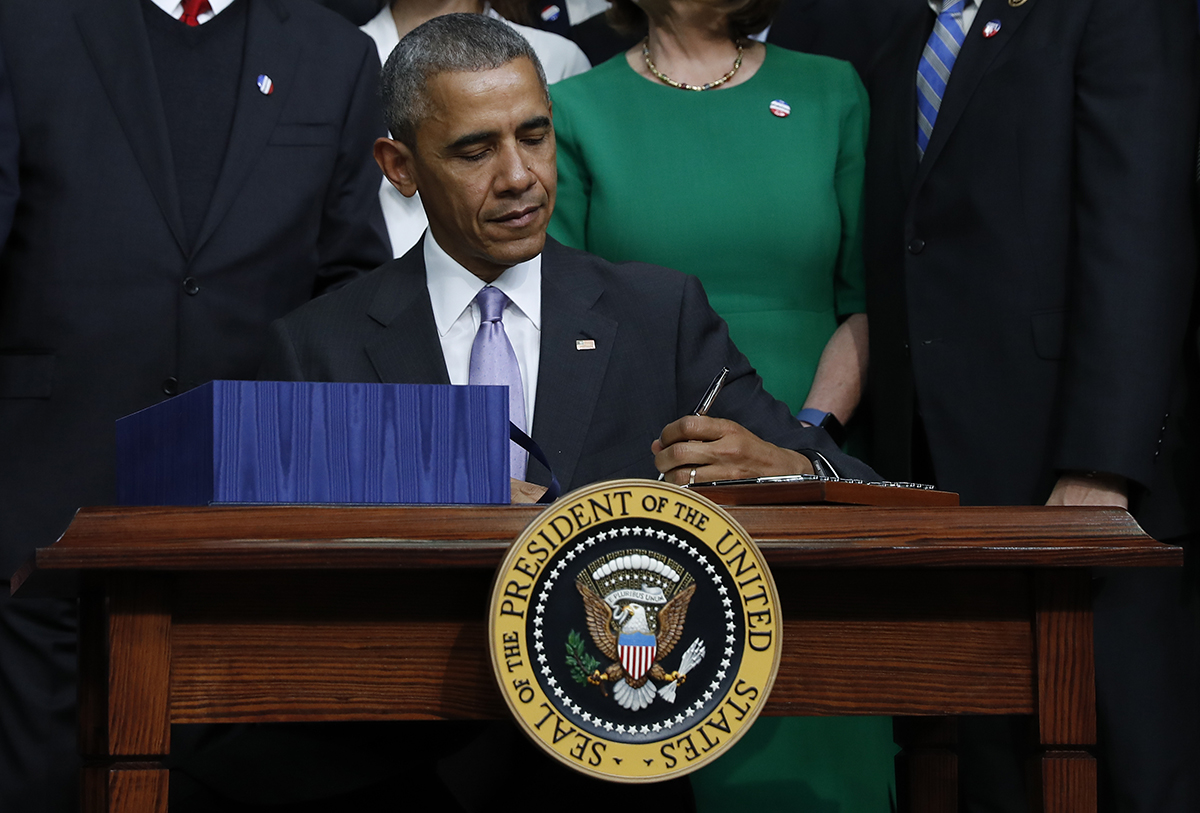Massachusetts May Reap the Benefits of the 21st Century Cures Act

Photo via AP/Carolyn Kaster
The 21st Century Cures Act—a sweeping piece of legislation that will fund medical research and make it easier for new drugs to reach the market—sailed through both the House of Representatives and the Senate, winning the final approval of President Obama on Tuesday.
The Cures Act encountered few opponents on its victory tour—only 26 state representatives and four senators voted against it—and none as vocal as Massachusetts’ very own Elizabeth Warren, who felt the legislation had been “hijacked” by the pharmaceutical industry. It’s noteworthy, then, that her home state’s medical community, and its governor, are welcoming the law with open arms.
“Anything that’s good for early-stage innovation and research is good for Massachusetts,” says Robert Coughlin, president of the Massachusetts Biotechnology Council, an organization that supports the local life sciences industry.
By all accounts, including Warren’s, the 21st Century Cures Act is good for early-stage research. The law sets aside $4.8 billion for biomedical research, benefitting the National Institutes of Health (NIH) and high-profile projects including the Cancer Moonshot, the Precision Medicine Initiative (PMI), and the Brain Research through Advancing Innovative Neurotechnologies Initiative (BRAIN).
As for how that’s good for Massachusetts? Harry Orf, senior vice president for research at Massachusetts General Hospital, says it all goes back to the strength of our hospitals and universities.
“The best institutions are the ones that get funded,” Orf says. “Massachusetts has a very high proportion of the top-notch research enterprises in the country and academic medical centers, so on a per capita basis, we do quite well.” (Orf isn’t kidding: Mass General and Brigham and Women’s Hospital alone receive 2 to 3 percent of the NIH’s extramural budget each year, he says.)
While $4.8 billion is a drop in the research bucket—the NIH’s total budget dwarfs that—Orf says any increase is a good increase. “The NIH budget has, in effect, been shrinking for the past 10 years,” he says. “Anything that can get more money into the NIH at this critical time is something that we value.”
That’s especially true because NIH money trickles down into the state economy, Coughlin says. “All that early stage funding, that doesn’t turn into a cure or a therapy immediately,” he says, explaining, “That’s how we start new companies,” which leads to new job creation. Since Massachusetts is also a hub for medical device and pharmaceutical companies, provisions that make it easier for new products to clear the FDA are also likely to aid local developers, Coughlin adds.
The Cures Act is also promising on the public health front. It includes provisions for mental health reform and earmarks $1 billion for opioid abuse relief—a crisis that has devastated Massachusetts.
“There is never enough money for addiction research,” says James Gessner, president of the Massachusetts Medical Society, a professional association for physicians and medical students. “It’s incredibly necessary, and we do have the appropriate infrastructure to come out of the gate running on this.”
While the $1 billion laid out in the act is not state-specific, Gessner says he hopes and believes the Bay State will get its fair share for opioid abuse diagnosis, treatment, prevention, and de-stigmatization efforts. “We’re the hotbed here in New England, so we’re hoping that we get at least our share of this, because we certainly know where we need the treatment facilities,” he says.
If there’s any downside to the Cures Act, Gessner says, it’s that it uses money from the Prevention and Public Health Fund, which deals with infectious diseases, chronic illnesses, and public health issues, to pay for some of its other projects. “Public health is still a critical area that needs full attention,” Gessner says.
Another possible negative, Orf says, is that money in the law is discretionary—that is, it’s still subject to the changing whims of politics, and not guaranteed to reach its intended recipients. That could be a problem for hospitals like Mass General, which are already entrenched in projects meant to be funded by the legislation.
“If we make those significant [research] investments, and suddenly [the PMI] goes away, it’s very difficult for us to deal with that,” he says.
Coughlin—who says the legislation has “no [downside] at all” for Massachusetts—doubts the discretionary nature of the funding will be an issue. “The overwhelming, bipartisan support for this bill…I think that is a mandate,” he says. “I think obviously people are committed to ensuring the funding of different components of the act.”
Only time will tell if that’s the case. But for now, all Orf and his peers can do is hope for the best.
“The return that the economy gets for the investments in research are enormous,” Orf says. “They are the best investments we can make financially as a country, and we’ve got to continue to remind Congress of that.”


